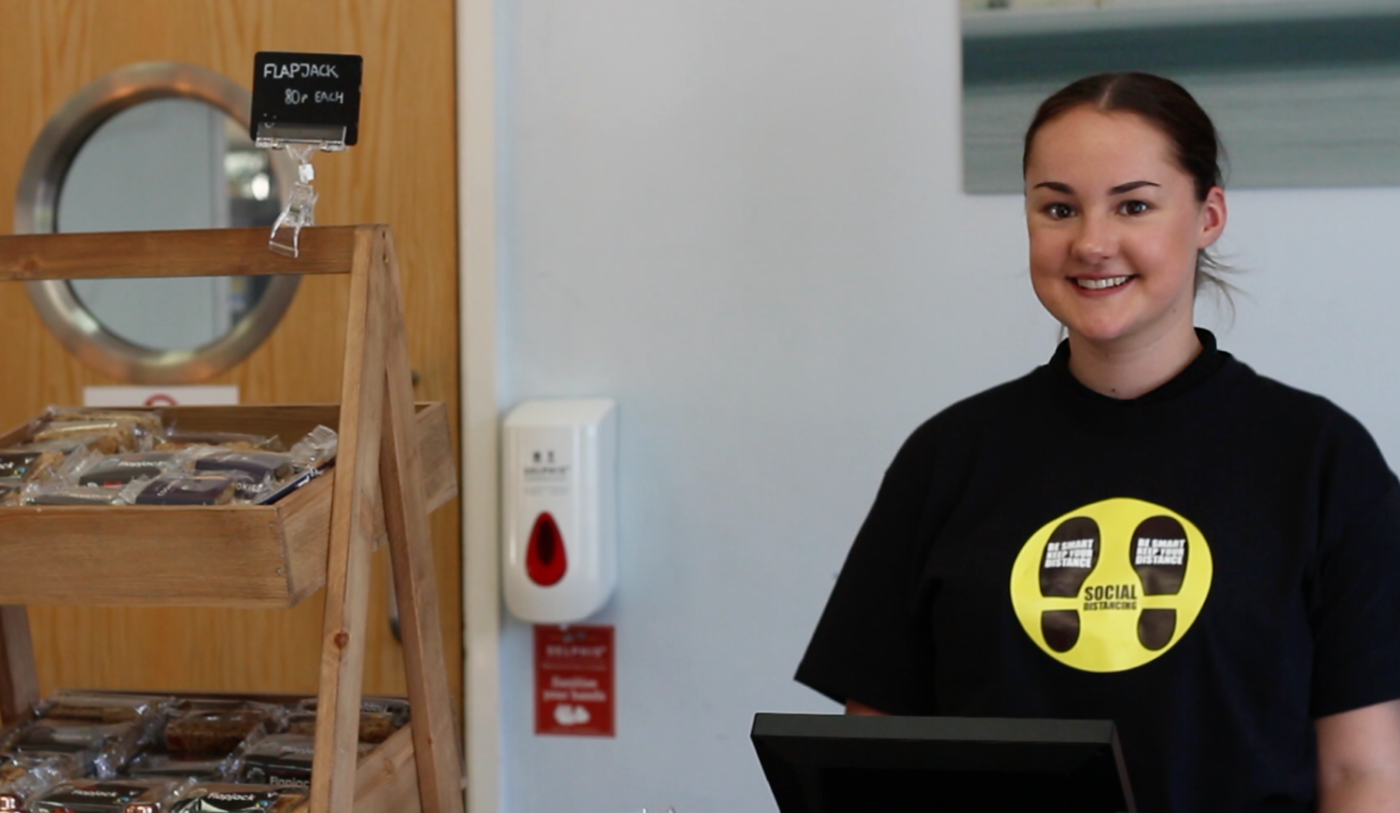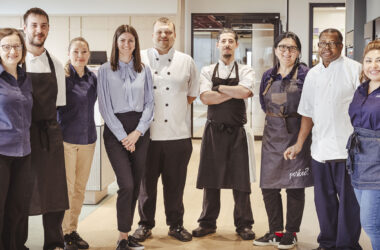Expert Guides
Workplace catering’s next normal

The ‘next normal’ was the phrase we used to describe the first 18 months in contract catering after Covid.
We believed there was unlikely to be ONE ‘new normal’. It would be a series of ‘next normals’. These will be impacted by global and/or national events. Obvious ones include lifting of Government restrictions or a hoped for vaccine.
Growing confidence
The greatest impact will always be from public confidence. Whether it’s restored confidence in travelling on public transport, sending children to school, or returning to work. These will all influence workplace catering requirements.
Caterers should be able to meet client and customer needs so that they feel confident to use catering. Putting in place the government’s ‘COVID Secure’ guidelines including a risk assessment, hygiene factors, social distancing and reducing transmission are some of the elements. Read our blog about Maslow’s hierarchy of needs to understand why physiological and safety needs must be met in order for employees to want to return to work.
Possible return to work phases
Phase 1: Critical client teams test new processes at work resulting in 20-30% building occupancy.
Phase 2: Rotated and staggered office working and home-working resulting in 50-60% building occupancy.
Phase 3: Refined phase 2. Visitors and external meetings now hosted within offices rather than social settings, resulting in 75% max building occupancy.
Phase 4: Re-stack of real estate to match new demands – fewer desks, more formal meeting spaces and informal collaboration spaces. In London that means less gyms and more showers and bike racks! It’s unclear if these more spaced-out offices containing less people will decrease real estate’s footprint.
Phase 5: The final business as usual (BAU) stage – workplace returns more closely to what it was like before the coronavirus crisis started.
The ‘next normal’ in each phase will evolve in line with organisations’ needs and confidence.
Food connects people
We believe clients will always want and need food in their workplaces. Food and social eating is a very special glue that binds people, organisations and cultures. Some clients are also using catering services to enable self-containment within buildings. This avoids employees having social contact with the high street and maintains tight controls on building hygiene.
Connect and collaborate
Hospitality and contract catering sector are both resilient and agile. This shows in the bm COVID-19 info hub, and our ‘Connect & Collaborate’ round table events. We have held nearly 20 of these events with clients, consultants and supply partners. They have generated powerful ideas which combined with our expertise, have created robust planning tools for our clients.
During the lockdown we have worked with other contract caterers to pass our collective thoughts to UK Hospitality (UKH). UKH is an excellent voice for our sector and puts forward our case to Government to create guidelines for safe reopening.
In the absence of much retail, restaurants and hotels being allowed to open, the contract catering sector has a unique opportunity to gauge the UK’s eating habits. We may be one of the only meals outside of home that our customers will be able to experience!
Seven ‘next normals’
This period is going to be a ‘first’ for everyone. Similar to when a building moves, this pioneering group will test new ways of working and behaviour. They will also become the role models for others to follow. This assumes the workplace is adapted to enable social distancing. This could be chequer board seating, extra sanitiser and hand-wash stations. New ways of working training will include showing customers social distancing etiquette in restaurants, coffee shops and hospitality.
Communication
To give reassurance and confidence. This could be using intranets, personal letters, training, floor-signage, posters and t-shirts. The list is infinite and this is the one time that more IS more!
Hygiene factors
Many factors but not limited to; health hosts and hygiene stewards, sneeze screens, gloves, face coverings, visible and increased sanitation, dining area sanitising between each customer (with signage to clarify if seating space is sanitised), removal of all self-service offers, cutlery packs, closing communal fridges, catering team providing daily health declarations and coordination and communication between the various facilities (FM) functions.
Technology
- Cashless
- Apps utilising pre-order and pre-pay
- Click and collect
- Booking collection slots for customers and restaurant users to stagger peaks
Offer and opening times
Covid will have a major impact on the eating and drinking habits of consumers and cover both health and financial. This means that consumers may look to be more health conscious but, at the same time, are wanting to do so on a budget.
Initially menus will be simplified to enable more take-away options. The consequent increase in SUP usage must be addressed in phase two,we firmly believe in the #BuildBackBetter ethos.
Pop-up offers can be served on client floors to minimise traffic around buildings. We believe a focus on food that can’t be made at home and comfort food using British ingredients will be popular. Offering all-day grazing boxes will help customers avoid making extra unnecessary restaurant visits during the day. Extended opening times will support staggered commuting times and even seven day working should be considered. Micro-markets will sell staple ingredients, home meal kits and take-away dinners to save customers making extra visits to shops.
Regional variations
Phase two will possibly occur more quickly at regional sites.. This is because potential issues in using public transport are less and car parking is more freely available.
Health and well-being
Opening social hubs at work will be attractive and important for positive mental health at work. A warm welcome and eating food that can’t be made at home will all entice customers back to restaurants. Working remotely won’t have been a positive experience for everyone. Healthier food from our Vitality range will be important.
Hospitality, fine-dining and events
We are anticipating that Hospitality, fine-dining and events will reduce in many workplace environments. Some clients suggest they may exclude visitors for the foreseeable future. Though we do expect socially distanced meeting rooms to be set up with personalised drinks and individually packaged food.
Summary
There won’t be ONE Next Normal. It will be a series of ‘next normals’, over the next 12-18 months. External and internal organisational factors will set the time-scales.
Catering offers will evolve through these phases, initially more conservatively and certainly using technology. Yet, ultimately it comes down to the food. Chefs are creative and excel in exciting and delighting customers.
Workplace dining and creating (a safe distanced) social hub will still be an important requirement for most clients. Some argue that it may now be recognised and valued as a significant benefit and a way to create engagement and ultimately drive productivity, collaboration and motivation.
The delivery model will be adapted but our vision and values haven’t changed. Our agility and innovation put us in a strong position to support our clients. We look forward to once again enjoying the pleasure of the modern office life when we can say “let’s all do lunch!”




